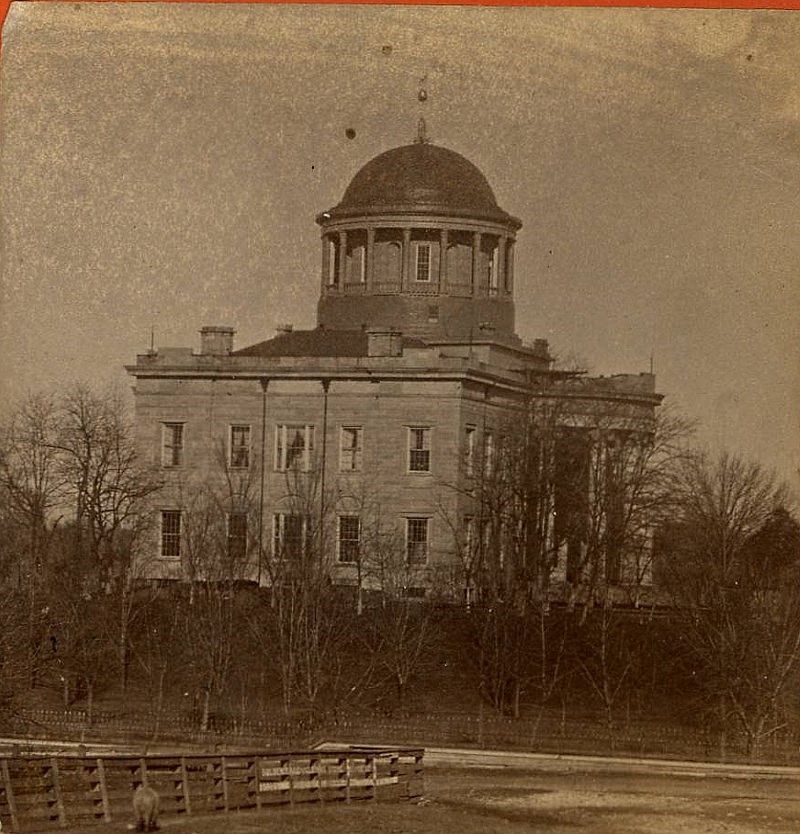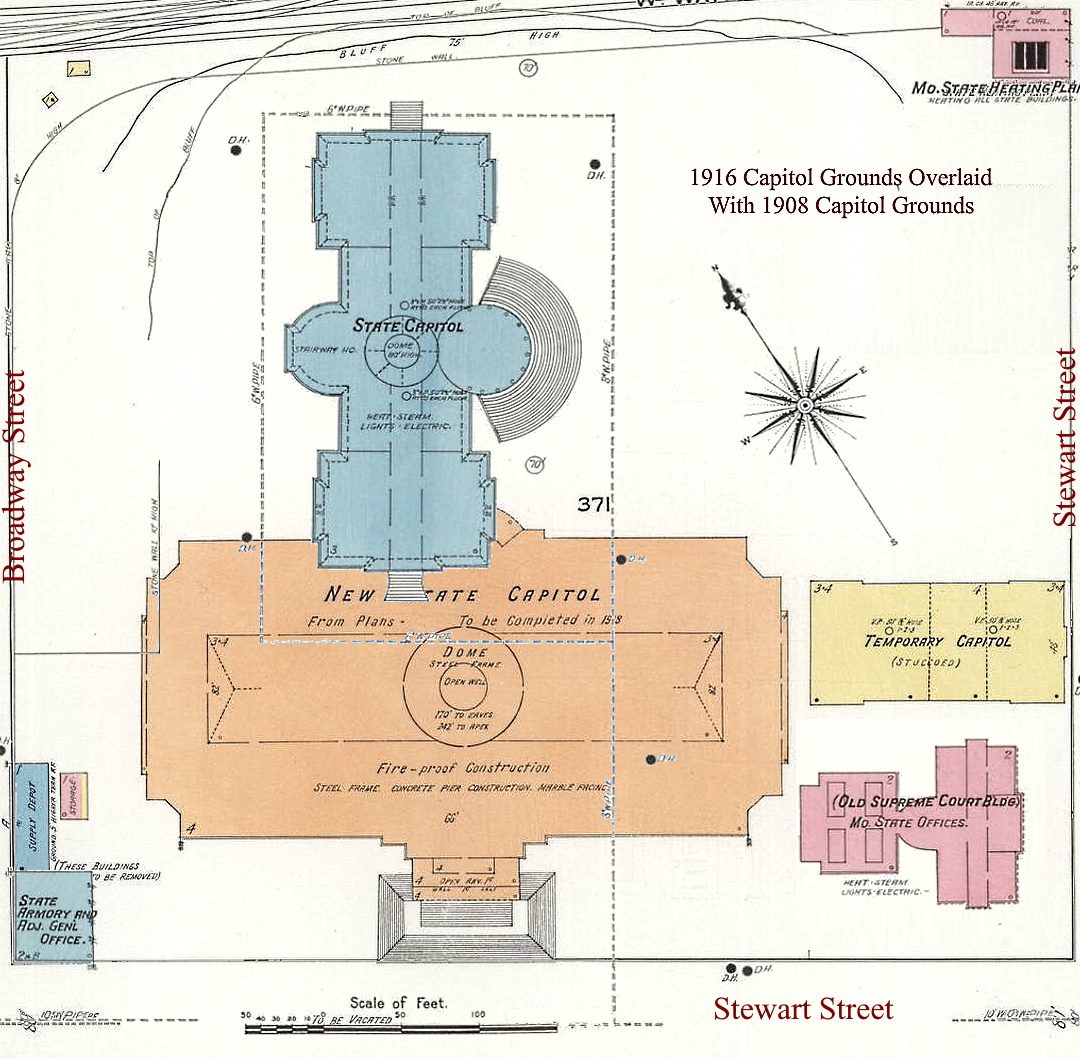When the City of Jefferson was laid out and ready for sale in May 1823, one complete city block did not enter into the scheme of numbered lots set aside for sale to the public.
That lot, bounded by Broadway Street on the west, Water Street on the north, Washington Street on the east and Main Street on the south, was reserved to become the site of the Capitol of the newly-created State of Missouri.
Until that building could be built, a residence for the governor of the state, which would also serve as a temporary meeting place for the Legislature when in session, was built in the north half of the block bounded by Jefferson Street on the west, Water Street on the north, Madison Street on the east and Main Street on the south.
The block set aside for the Capitol sat empty until a fire in 1837 in the residence of the governor destroyed that building and made it imperative to complete the Capitol in accordance with the plans that were under way. The first actual Capitol in the City of Jefferson was completed in 1840 on the site originally designated for it, displacing the Native American burial mounds that were present on the site.
Through the course of time, it became apparent that additional buildings would be necessary to provide space for newly- emerging functional departments of state government. By 1857, state government was soliciting offers of sale of the properties of the half block south of the Capitol grounds, the half block east of the Capitol grounds and the one-fourth block southeast of the Capitol grounds. This action necessitated creating a new street to the east and south of the enlarged capitol grounds named Stewart Street.
By 1860, those purchases were finalized and the first building constructed on the newly increased Capitol grounds was a state armory and adjutant general's office was completed. The state armory sat directly on the southwest corner of the Capitol grounds, directly across Broadway Street from St. Peter's Cathedral and was constructed from locally quarried limestone.
For its first 55 years, the Missouri Supreme Court's three judges rode on horseback to towns around the state to hear cases. By 1875, the state Supreme Court comprised five judges when the state Constitution was changed, requiring the judges to hear oral arguments in Jefferson City. The next building to be constructed on the Capitol grounds was that of the first Supreme Court building in 1878 at a cost of only $17,000. It sat near the southeast corner of the Capitol grounds where Stewart Street formed a right angle corner. It was constructed as a two-story building of red brick with stone quoins and dentil detail. While construction was underway, the court was housed in a room in the west corner of the first floor of the state's 1840 Capitol building.
It was soon clear that a larger and higher quality space was needed to house the court and its living chambers, where judges would reside for the three months out of the year in which the court was making decisions. After 1890, when Missouri voters increased the number of judges on the court to its present size of seven judges, an annex was built to the side of this building for judges' chambers and to house the Supreme Court library.
Additions to the Capitol were made to accommodate the needs of a growing state government. A north wing and a south wing were added, each 76 by 109 feet. The central portion modified and the height of the dome increased to 185 feet in an endeavor to make the outlines of the building proportionate. More than a year was consumed in constructing these large additions to the old Capitol; it was completed in 1888 at a cost of $220,000.
The old Capitol was gutted as a result of a fire which occurred on Feb. 5, 1911. It was decided to construct a new Capitol on the existing "Capitol Hill" as opposed to repairing the old building. To accommodate a small portion of state government during that construction process, a temporary Capitol was constructed immediately north of the Supreme Court building and east of what would be the new Capitol. It would remain in that location until the new Capitol was completed and would then be demolished.
Demolition of the old Capitol, armory and Supreme Court buildings commenced in 1912 and construction of the new Capitol was completed in 1917. That new Capitol, as we know it today, was situated essentially south of the site of the old Capitol with the front edge of the south steps starting at what was the edge of Stewart Street. The Capitol grounds were again enlarged by adding the lands between what was Stewart Street and High Street to accommodate the new building. Although our Capitol was put into service in 1917, it was finally dedicated in 1922.
Wayne Johnson is a Jefferson City native and retired engineer and chemist. He has worked closely with four local historical societies, setting up websites, digital imaging, search and retrieval of those images and compiling Callaway and Cole counties' early history.


